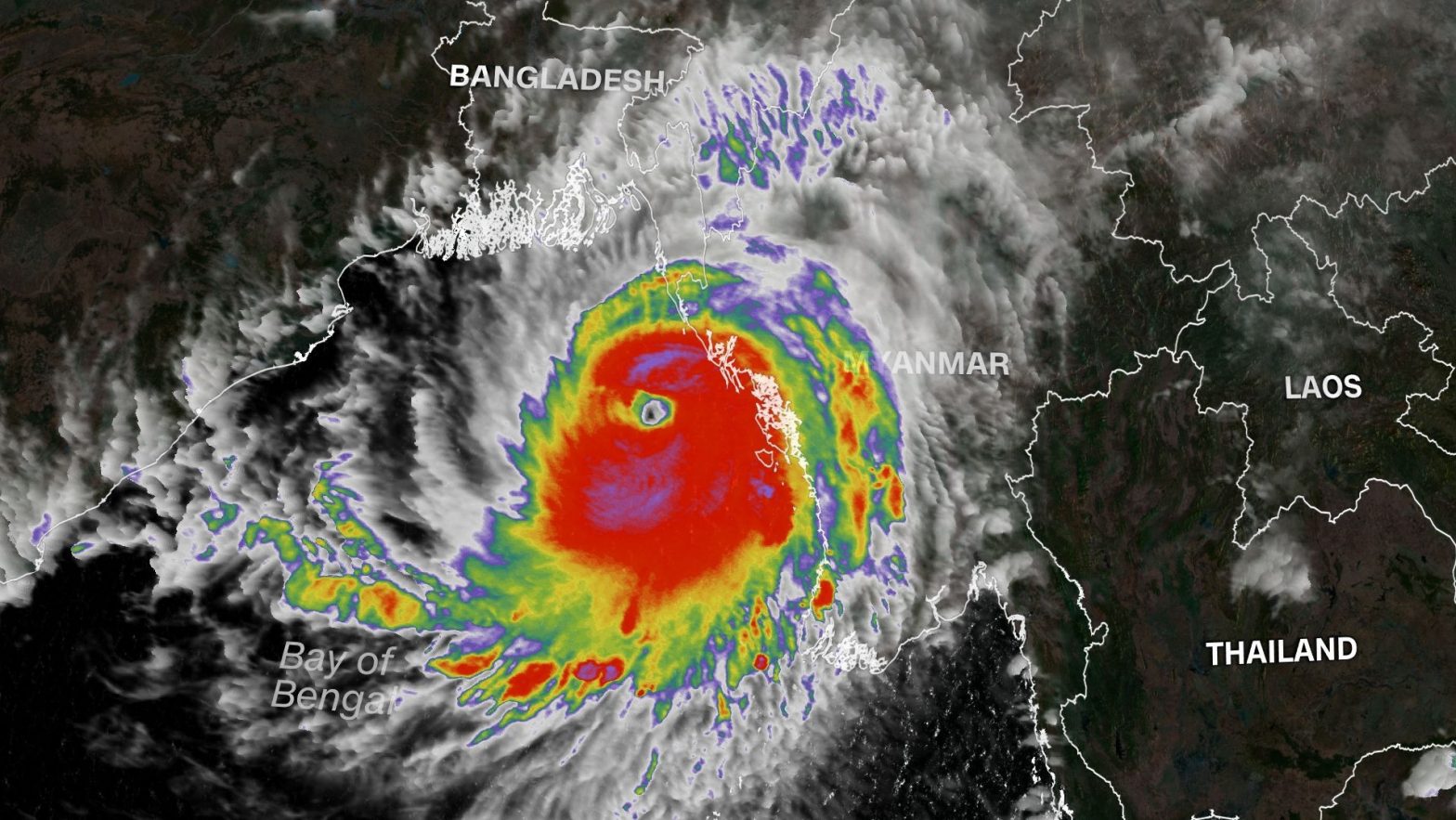In Myanmar, rescue organizations are bracing for a potential large-scale loss of life following the devastating impact of Cyclone Mocha, one of the most powerful storms to ever strike the nation. The cyclone, which hit the west coast of Myanmar, has caused widespread destruction, fueling concerns about a looming humanitarian crisis.
On Sunday, the formidable cyclone swept through Myanmar’s coastline, causing extensive damage in the strife-ridden Rakhine state. This region, a hotspot of recent political turbulence, hosts hundreds of thousands of displaced people, many of whom belong to the marginalized Rohingya Muslim minority.
Amidst the catastrophe, Brad Hazlett, the head of the NGO Partners Relief and Development, voiced his deep worries about the potential human toll, especially in the makeshift camps accommodating the displaced Rohingya. “We’ve seen a significant loss of life in the camps,” stated Hazlett. He added, “An exact figure is difficult to provide…One village was entirely obliterated by the cyclone, with a death toll of at least 20 people.”
Currently, obtaining accurate casualty numbers is proving to be a daunting task due to impaired communication systems and restrictions on access. Hazlett further explained, “The phone network is unreliable at this moment, roads are obstructed, and at least one concrete bridge has been swept away, making it difficult to confirm the numbers.”

Footage from Sittwe, the capital of Rakhine, reveals the extensive damage inflicted by wind speeds exceeding 200 kilometers per hour, with homes demolished and debris scattered across settlements. Myawaddy TV, owned by the Military, reports a confirmed death toll of three individuals, with 13 others injured. However, aid organizations anticipate a sharp rise in these numbers as rescue operations continue.
Before Cyclone Mocha’s devastating arrival, the UN’s humanitarian office (OCHA) had already warned that approximately 6 million people in the region required humanitarian aid, with 1.2 million individuals displaced due to ethnic conflict. The cyclone’s impact is expected to worsen this situation.
On Monday, Myanmar’s military junta leader, Min Aung Hlaing, visited Sittwe to survey the damage and distribute aid, as reported by state media. The junta, which took control in a 2022 coup, has faced condemnation for its handling of the Rohingya minority, who they consider illegal immigrants, a claim the Rohingya vehemently deny, asserting their longstanding presence in Rakhine.
The last cyclone of comparable magnitude to strike Myanmar was Cyclone Giri in October 2010, which led to over 150 deaths and wreaked havoc in roughly 70% of the city of Kyaukphyu. The UN estimates that about 15,000 homes were destroyed in Rakhine state during that storm. In 2008, Cyclone Nargis claimed the lives of nearly 140,000 people, marking it as one of the region’s deadliest cyclones.
As Myanmar contends with the aftermath of Cyclone Mocha, the global community anticipates a significant humanitarian crisis. Rescue and relief initiatives are in motion, focusing on delivering essential aid and support to the impacted population, with a particular emphasis on the vulnerable Rohingya community.
©world-news.biz
